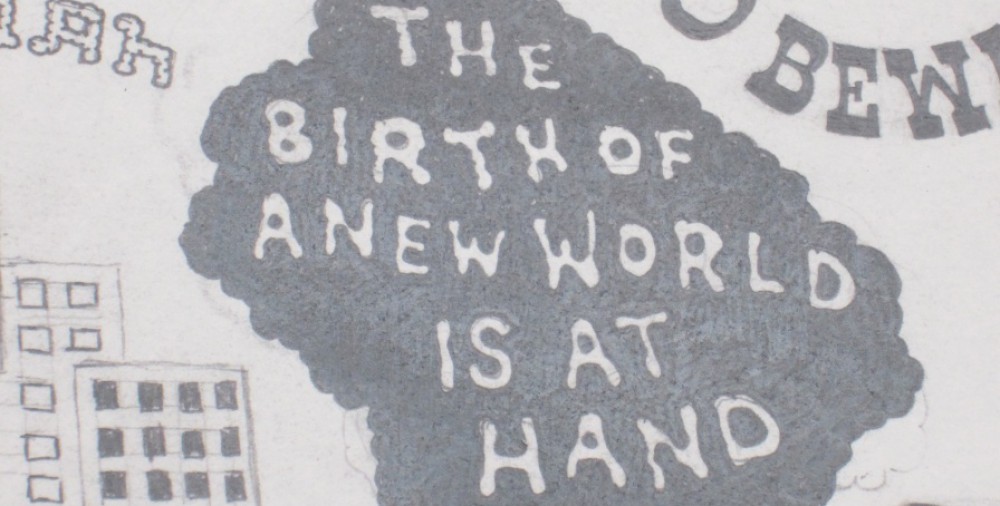Out of all three stories we have read so far, “The Machine Stops” by E. M. Forster is the one I like best. It caught my attention as soon as I started reading it. I felt as though I was reading the human version of the Cartoon The Jetsons. I pictured the setting to be in outer space until I read further along “we have lost the sense of space. We say ‘space is annihilated,’ but we have annihilated not space, but the sense thereof (pg 11). The title of the fist chapter “The Air-ship” made me believe it took place on a plane flying in otter space where there was a civilization. Writing my blog now I don’t really know why I dismissed earth completely, aside from the fact that I know this course is based on utopias and dystopias.
The way they communicated is similar to today, when people video chat. Although today people can still interact with one another, it is true technology is advancing more and more everyday. In today’s world we are more dependent on technology, work related, school related, medical advancement, or even just for entertainment purposes. People would say “what would we do without technology, life would probably be so boring” but we forget to look back on how people did things before technology even existed. Which is why people of an older generation might agree with these lines in the story: “Year by year it was served with increased efficiency and decreased intelligence” (pg 20), ‘it’ referring to technology and “beautiful naked man was dying, strangled in the garments that he had woven”(pg 25). “That it is we that are dying, and that down here the only thing that really lives is the Machine? We created the Machine, to do our will, but we cannot make it do our will now. It has robbed us of the sense of space and of the sense of touch, it has blurred every human relation and narrowed down love to a carnal act, it has paralyzed our bodies and our wills,, and it now compels is to worship it” (pg 15). “This was a book of the machine. In it were instructions against every possible contingency” (pg 4). I took this to represent our constitution, laws, religion, and or beliefs. “while there was the Book there was security”(pg 23).The Machine brought everything to the person, instead of having the person go to the object. We would normally say “ oh my! If only we had this in real life, it would be perfect!” If we did that would bring about several problems, like obesity, because of lack of exercise, although, obesity might bring about Homelessness. It would also, make me go insane, not being able to interact with others, having to be in a single room with just a Machine, to me that sounds pretty boring. Going back, “Homelessness means death”(pg 10). “People were almost exactly alike all over the world” (pg 8), which makes sense if one were actually living in the perfect world, where one is not allowed to be different. This line I thought conflicted with “By these days it was a demerit to be muscular. Each infant was examined at birth, and all who promised undue strength was destroyed” (pg 11), only because that’s equivalent to abortion today, which people have different views on, but wouldn’t they want to have people with certain abilities to do certain things to help keep things the way they are in a sense. By this I mean if the machine had to be taken out of a room for repair and another was installed in the mean time, if the machine were to be a heavy machine they would need someone to be strong. Although, some people might think being strong is wrong, and the strong would be either looked down on or they would be superior. Then again I wondered if the Committee was made up of real people or if the committee was apart of the Machine, which would then defeat the purpose of bring any complaints to them about the Machines malfunctions.
Kuno’s escaped was maybe just the tip of the iceberg as to what was yet to come. This proved that there could be no perfect world, while having the knowledge that there had been one before. The discovery Kuno made went against everything everyone believed and therefore he was threatened to Homelessness because this would cause chaos and emotions to stir in their civilization and soon everyone would start trying to do what he did. The lack of feelings by his mother made Kuno not only made at her for not understanding but also mad that she worshipped the Machine, thus making his mother mad for him talking bad about the Machine. Vashti thought kuno’s discovery was the worst thing that could happen but little did she know everything he was saying was true the machine could stop. Then what? What bothered me is how could people come up with new ideas without really going out and discovering new things, “First-hand ideas do not really exist. They are but the physical impressions produced by love and fear, and on this gross foundation who could erect a philosophy? (pg 18). This didn’t make sense to me because I think the person who made the first idea must have gotten it from somewhere, like actually making a discovery. If first hand ideas didn’t exist then where do the ideas that were based off of the fist come from?



